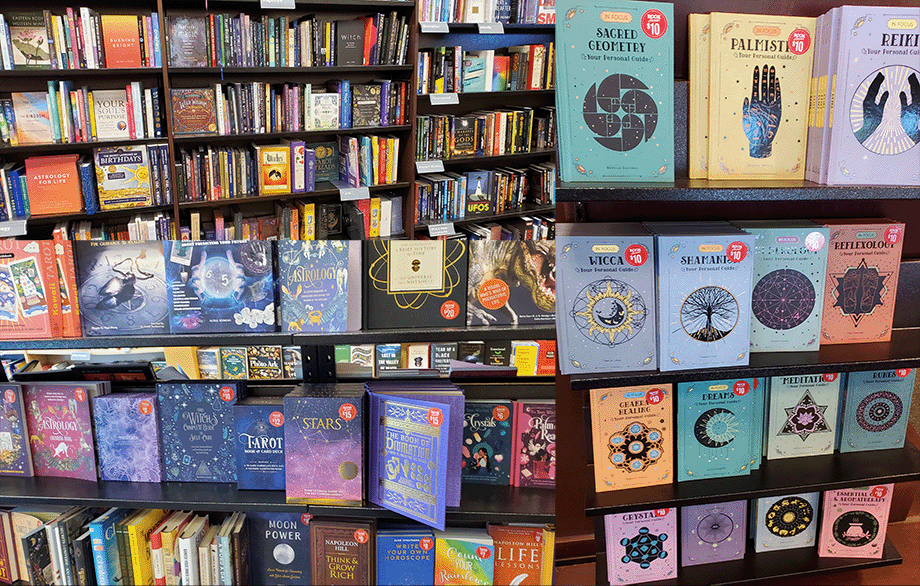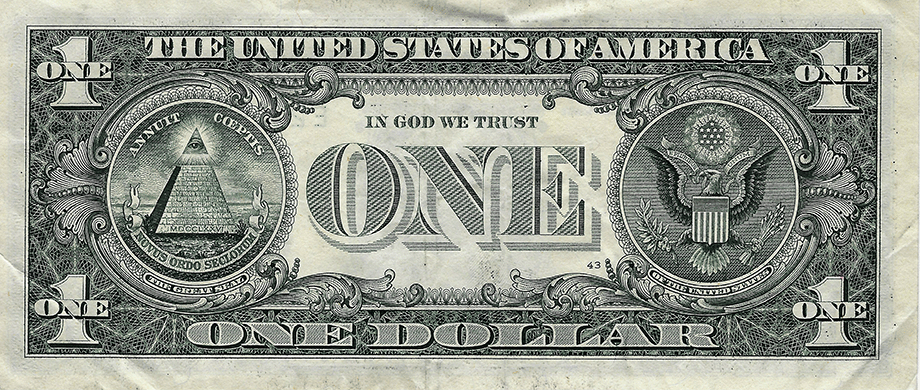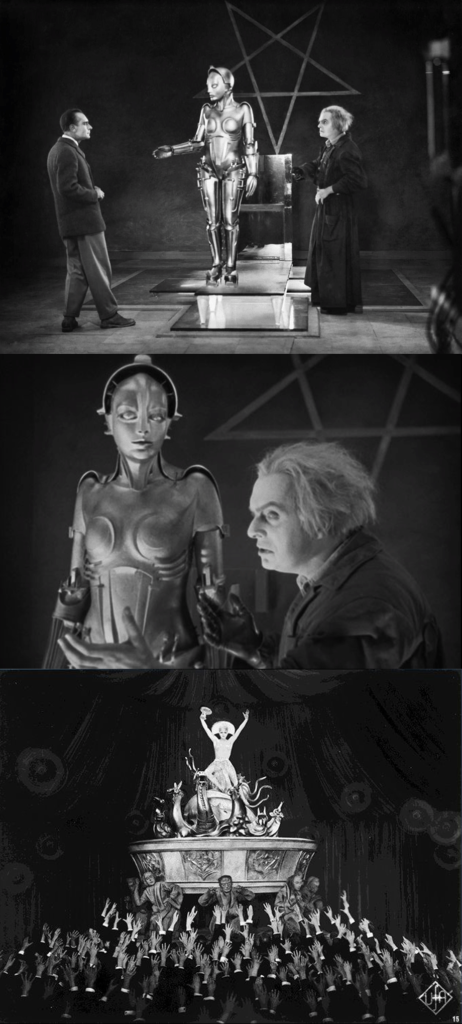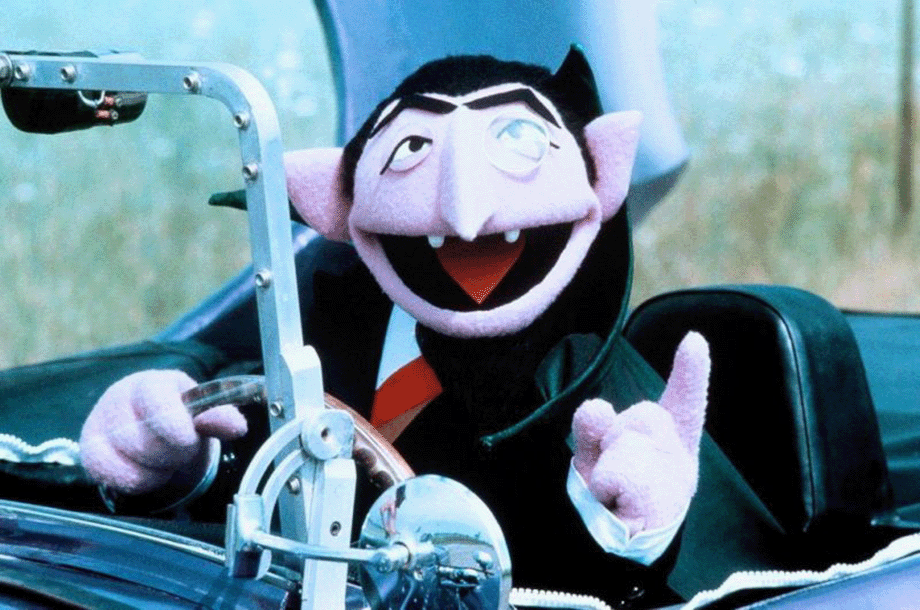Way back in my early years (between five and seven) as a weird child, I had discovered The Encyclopedia of Ancient and Forbidden Wisdom by Zolar in a dark corner of the family bookcase. I don’t know where it came from or how it got there, and no one else ever acknowledged its existence when I took it to my room.
Within its tattered coverless pages, I gained access to many of the mantic arts, including astrology, tarot, palmistry, phrenology, and a host of others. The one that was of most immediate interest and service, however, was numerology.
The reason is simple. I did not have any tarot cards. There was no Amazon in the early 70s. There was no internet, and the few bookstores that existed in the nearest large town (a two-hour trip away) did not have shelves resplendent with 57 varieties like the B&N does today.

Sadly some of these books are even written by machine, collected via web search AI and only moderately edited before some “author” is paid for the use of a name. The hundred or so titles in stock in the store are the tip of the iceberg carried online, or available as a digital version.
And among the ones in the store, I didn’t even notice the lone dubious volume on numerology. But, hey, you can learn all about all these secret sacred practices and have matching covers.
If you are starving for a resource that goes beyond packaging, take a spin around archive.org. You can find scanned copies of old magical texts downloadable for free, like the Tetrabiblos of Claudius Ptolemy, Waite’s Pictorial Key to Tarot, The Greek Magical Papyri, The Keys of Solomon, and Paracelsus’s Three Books of Occult Philosophy. If you are multi-lingual you can even find Eliphas Levi’s works in the original French, and a number of good texts in German, Latin, and Greek.
I started my own journey with the few mass market omnibus texts available in the 70s and 80s, so there’s no harm in it. Just be aware there’s more to it than that.
Likewise, astrology required an ephemeris and tables of houses and complex calculations which also were not readily obtainable in my current environs.
But numbers, well, those were free. I could work with them in my head while I didn’t sleep at night ( I suffered from terrible insomnia into my 40s) . They were also much more limited in scope than Tarot. Ten digits, 0 through 9. And while it took me a bit to visualize the layout of the 26 English letters against the ten digits, once they were converted, and computed, and got down to a single significant digit, then there were only a few meanings to keep track of.
So between experiments with astral travel (also in the book) I lay awake and reduced names and dates and places down to their essential numeric quantities. And I developed a love for number play that serves me to this day.
I haven’t seen a lot about numerology discussed on the interwebs. It doesn’t have the flash of posting a handful of tarot cards or the hook of warning about Mercury Retrograde.
I gather it may be a bigger thing in Hindu culture, but I must confess that I know very little about the method or the meanings. Perhaps that is something I shall explore.
There’s a Kabbalistic version as well, since Hebrew letters have assigned values, thus words may be read for the numbers and the meaning of the numbers interpreted. This permutations of letters that is part of the Kabbalistic tradition can also be worked with the numbers. I’ve dabbled with this a bit.
Numerology, like all the mantic arts, seeks to reveal something to us about ourselves and our future that is not readily apparent. It does this by taking numbers like dates, and reducing them down to a single digit, or two sets of double digits.
For instance, take July 4, 1776. That’s a 7, for July, plus 4 plus 1 plus 7 plus 7 plus 6. The result is 32. So then we add 3 and 2 to get 5. Five is number associated with this date. Five by the system I learned can be interpreted as conflict, chaos, or instability. This might be readily applied to that date.
But as the day of the month can be seen as a separate thing unto itself, it’s possible to come up with different numbers.
4 plus 7, of course is 11. 11 is one of those special numbers (22) being the other one, that typically are considered “resolved” without adding the last digits (to get simply 2). And the year resolves to 3. Three is considered a stable number because it represents the union of the masculine 1 and the feminine 2 (apologies to folks struggling to find non-binary traditions, this is from thousands of years ago) . Eleven can be seen to be a spiritual number, and two may be read as community or loyalty within a group.
These could also be effectively applied to this date. While I am sure some readers will hold differing views in this regard, the example was to illustrate the method, and not to render a judgment.
In actual practice, however, we have to suppose John Hancock went to Ben Franklin and asked him the best date in July of 1776 to get the Declaration signed. Been would have run the numbers and said that the 2nd should be good, because it resolved to three and spoke of harmony and union. But Hancock said they couldn’t get it back from the printer on time.
So Ben took out his tables again and told him that the next best time to sign it would be August 2, because that equates to a 4, and 4 represents the Four Cornerstones of the Universe and the Foundation of the Temple (any National Treasure fans out there. You know what I’m talking about).
And that’s when it was signed. August 2, 1776. The July 4 date is when the membership voted agreement to the version we now know, which deleted Mr. Jefferson’s more blunt condemnations of the slave trade objected to by the southern colonies. But it was signed in August, and no one has a picnic. According to the almanac it was time to be harvesting instead of picnicking.
It’s not unreasonable to assume that old Ben, and potentially many of his contemporaries, dabbled in the mantic arts. The 17th and 18th Centuries saw us moving from Mesmer to Faraday, and from Ptolemy to Newton, but it was never an immediate and brutal break. Sir Isaac Newton himself was a practicing alchemist, and the period of madness he suffered around 1693 is often attributed to mercury poisoning from his experiments. Yet he invented calculus to prove how the wheels of the universe turned.
Franklin is one of those fascinating polyglots from history that you just know was into something they left out of the books. Put aside all that secret Masonic conspiracy stuff. He was playing with lightning. Gotta love that.
And his inventions are still in use today. Otherwise I couldn’t see what I am typing.
A true figure of the Enlightenment; he was philosopher, scientist, and, I think, magician. Franklin is rumored to have rubbed elbows with Count Cagliastro and the Comte de Saint-Germaine during his numerous European travels. Some of his other buddies were known students of the occult.
Magic, alchemy, and the mantic arts survived into the Enlightenment by transmuting themselves.
Astrologers could accommodate Newton’s Principia Mathematica because it gave far more accurate calculations. Knowing better the true nature and motions of the Heavens, they reasoned, could not but result in a truer reading of their portents.
The concepts of Sacred Geometry were better expressed through the new math, and the analogy tied into the Masonic doctrines. The symbol of the All Seeing Eye atop a pyramid of sacred numerical dimensions adorns the back of the Great Seal of The United States and is familiar to anyone who has seen a dollar bill. Boldly the motto proclaims “By Divine Favor – A New Order for the Ages”.

The back side of the one dollar bill features both sides of the Great Seal, commissioned just after the Declaration of Independence was approved on July 4, 1776. The final design, however, wasn’t adopted until 1782 (there was a war on, you know.)
Despite what Jerry Bruckheimer would have you believe, the symbols employed are from common heraldic devices of the time, and not the product of a secret Masonic code. Of course, the heraldic symbols have a whole heapin’ lot of occult meaning going back into pagan days. That eagle is Roman, of course, the pyramid Egyptian. Don’t miss the hexagram layout of the 13 stars over the eagle’s head. As above, so below.
Officially, the 13 courses of stones in the pyramid is representative of the 13 Colonies that became the United States. If you look on the opposite side of the Seal, the eagle holds 13 arrows, has 13 stripes on the shield, and there are 13 stars in the circular cloud (a variation on the mandorla of religious art) over it’s head with the motto “From Many One”. The olive branch of piece held opposite the arrows of war has 13 leaves and 13 olives.
You gotta wonder, if 13 is such an unlucky number, how come they were so enamored of it. Surely this was courting disaster. Okay, sure, they were kind of stuck with it, being as they had 13 colonies, but if it’s a bad number, how do you fix it? It’s not like Gandalf could add a hobbit.
Well, one way to do it is to rationalize it as King George’s bad luck. But the numerological way is to get a different number, and you can do that by including the bad number enough times to get a better one. In this case, there are 6 instances of the number 13 on the Great Seal. Six times 13 is 78. Seven and eight add up to 15, and one and five add up to 6. The number 6 can signify harmony and stability, so that’s better than unlucky 13.
Alternatively, we can reduce 13 to one plus three and get 4. The number 4 represents stability, responsibility, structure and effort. It can represent the four elements, four cardinal directions, and by extension tie into the order of the universe. That’s definitely something a New Order for the Ages would be looking to partake of. Of course, there are six instances of 13 so we have to do six times 4, and that comes back to 6 again (24 = 2+4 = 6).
On the other hand, we can take 4 and 6 and get 10, which can be read in many ways. Reduced to 1, it represents unity. That charts. Read as 1 and 0, it contains the generative principle of beginnings and the unlimited potential of the future. It can also be seen as a union indivisible (where have I heard that before…) and finally, 10 being the number that occurs after the first series of single digits, can also represent a new beginning.
Now I am not saying that the founders of the nation, or the committee to design a Great Seal, or anyone in that secret Masonic conspiracy to hide the Templar Treasure, ever did any of these calculations. That does not alter the fact that the calculations can be made, and the meanings inferred, and there being something to it after all.
Numbers are part of the nature of the universe. We can argue about gravity and electromagnetism and strong and weak force and spooky action at a distance and whether or not anything can exceed the speed of light, but we cannot change the absolute fact of number.

In the long version of the film, we find out the robotrix is created to resurrect Hel, a woman that both Rotwang and the city master loved. But she favored the city master over the eccentric scientist/magician, and died giving birth to the male protagonist in the story. Hel, of course, is also the name of the Norse Goddess of Death.
The process of animating the robotrix gives her the appearance and life force of the human woman Maria. She puts it to immediate use presiding over an orgiastic scene as Babylon riding on the Beast with Seven Heads.
There’s a lot going on with this movie. If you can locate a copy of the restored version (I think it is available through one of the online services) I recommend viewing it with an eye toward the magical symbolism.
If there is a thing we’ve got numbers. If there is a thing, and another thing, we’ve got numbers. If there is nothing at all, we still have numbers. Zero is a number, and even zero is one. There is one nothing if we have nothing (Did you hear that in Count von Count’s voice; because I did?).
Two is always two. It’s two here. It’s two on the dark side of the moon. It’s two on Alpha Centauri and two ten billion years ago. While the symbols and words we use to describe number may change from language to language and era to era, number does not change. Number is a fact of reality. Any reality. All realities.
If you are looking for an anchor in the Waters of Darkness, numbers will be there. It is not for nothing (“one,,,one nothing,,,,”) that numbers play such a significant role in magical practice.
Our use of triangles, circles, squares, pentagrams, hexagrams, and other geometric constructs derive from the power we associate with these numbers, and the symbols we can attach to them.
The pentagram is the Five Elements of Aristotle – Earth, Air, Fire, Water, and Quintessence (literally Fifth Substance).
The hexagram is the Star of David, the Seal of Solomon, and a symbolic representation of the Hermetic maxim “As Above, So Below”.
The Hebrew alphabet has 22 characters each with a numeric value. Tracts written in Hebrew can be read as either letters or numbers when seeking hidden messages. And they can be manipulated numerically as well as alphabetically to reveal new secrets. According to Eliphas Levi these 22 letters equate to the 22 cards of the Major Arcana, thus demonstrating that the secret teachings of Kabbala are recorded in the Tarot.
There are 21 numbered cards in the Major Arcana, and one unnumbered card, the Fool, which is regarded in modern decks as zero. The placement of the Fool actually varies, and Levi put him at the point between the Last Judgment (20) and the World (21). If you are using Waite or a deck based on his, you probably have the Fool before the Magus.
In any case, it’s possible to read the 22 cards as representing the meanings of the Hebrew characters assigned to them, as well as in the usual way. For that matter, we can read the Tarot astronomically because planetary and zodiacal connections have been made. 1The traditional astrological correspondences don’t always work for me. For example, I have always felt that the Hermit was Saturn, even though the usual attribution is Mercury. I find some justification for my purely intuitive association, in that on the old Sforza deck, the Hermit carries the hourglass of Time rather than the lantern. And then both these correspondences can be read numerologically. And, of course, there’s the numbers on the cards themselves. Death is XIII, our unlucky 13. The Devil is XV, or 1+5. Here the resultant six is likely connected with the Biblical Number of the Beast 666, from Revelation.
Here’s another little game to explore. The first three cards – Fool, Magus, Priestess, are 0+1+2=3. The next three cards – Empress, Emperor, Heirophant, are 3+4+5=12=1+2 = 3.
The Empress can be seen as the material incarnation of the Priestess principle. The Emperor the earthly Magus, and the Heirophant the structured dogma ascribed to the natural Creation of the Fool. That these numerically equate reinforces this interpretation, as above, so below.
In fact, if you add the numbers on the next three cards, you also get 3. And the three after that. And the three after that. Until you are left with the last card- the World, which is number 21. Two plus one is three.2 While this trick works for the numbers 0-21 split into sets of three (with the one remaining), it’s always intrigued me how the Major Arcana can be so readily divided this way. Viewing them as trines is integral to my personal work with the deck.
Then we have the Minor Arcana, which until Waite, were usually just pips. So there wasn’t an image to evoke a particular meaning. These were done solely by number and quality. The number 5, for example, was seen as instability and conflict. The 5 of Wands, for example, then is a disagreement, potentially in the courts, as the wand may be symbolic of civil or religious authority. A 5 of Pentacles, which represents the home, heart, and wealth, could presage marital difficulties or a loss in the markets. The face cards typically were assigned to people, a child, a young adult, and a mature man and woman, though these are as easily numbered, 11 through 14. This makes the queens bear the burden of unlucky 13. I wonder if there was intentional misogyny there. Taken together the four suits have 56 cards, that reduce to 11.
So the combined deck of 78 cards (which would work out to 6) can be viewed as 11 and 22, the two super numbers of numerology.
When you start seeing numbers, you start seeing numbers everywhere. Not just the direct numerals that are on the mailbox or the clock. You start to notice quantities and sets. You become a kind of Count von Count all on your own. Why are there three pillars on that building? What is the significance of the octagonal base of the columns? Why does the building have a round footprint?3If you know the answer to some of these questions, you might be part of that secret Templar conspiracy. But if I told you about it, I’d have to kill you.

Like the so-called “angel numbers” an enhanced observation of the apparently random appearance of numbers in our everyday life can be a source of relevant insight.
Numerology goes past the basic birth number and life number. it includes things like sequences of prime numbers, π and Φ, and fractal as well as sacred geometry. It’s angles and calculus are inherent in every pentagram and magic circle, whether we consciously evoke them or not. We can express through number both time and space, and use number to manipulate them.
If I woke up and saw that it was 2:22 in the morning, I might briefly recognize that this was an Angel number before rolling over to sleep. If it occurs on February 22, I might need to pay more attention. And if it happened this year, that is 2:22 2/22/22, I had better take notice. It was 2:22, on February 22, of 2022. If it was not revealed to you personally, it might just be a fun coincidence, but if something woke you up that morning, it bears further investigation.
Numbers being what they are, this kind of thing can actually lead to compulsive behaviors. Superstitions abound with instances of threes, sevens, and nines. You can become so obsessed with number that you need to have an exact number of items on your plate at lunch or you won’t get on a bus with certain number, or you regard certain dates as being bad luck.
Numerology, like astrology or Tarot, can be taken to the extreme. I have never seen it as an absolute, but I definitely use number in my practice, in my art, and in everyday life. I don’t look askance at going out on Friday the 13th, anymore than I hide out in my house during Mercury Retrograde. But as tools to expand my universe, and a means of listening to that universe, numbers are very handy. And you really can’t escape them.
I hope you have enjoyed this foray into the wild and wacky world of numbers. I have only scratched the surface of the connection numbers have with magic and esoteric thought. We haven’t even mentioned things like the Golden Ratio, magic squares, planetary hours and other complex beliefs around number that fire the mind and open the eyes. I will probably revisit the topic in future articles. In the meantime, I hope you will join me again next week.
Count Von Count is a creation of Sesame Street/The Children’s Television Workshop/Jim Henson.
Metropolis was in the public domain but has since been re-copyrighted by the FW Murnau Foundation.
Images of Albert Einstein were found on the Internet. While the intellectual property probably belongs to his estate or the original photographers, they are fairly ubiquitous.
I am not making a profit on this blog, so I consider the inclusion of these images as fair use. I will remove them if requested by the respective rights holder(s).

